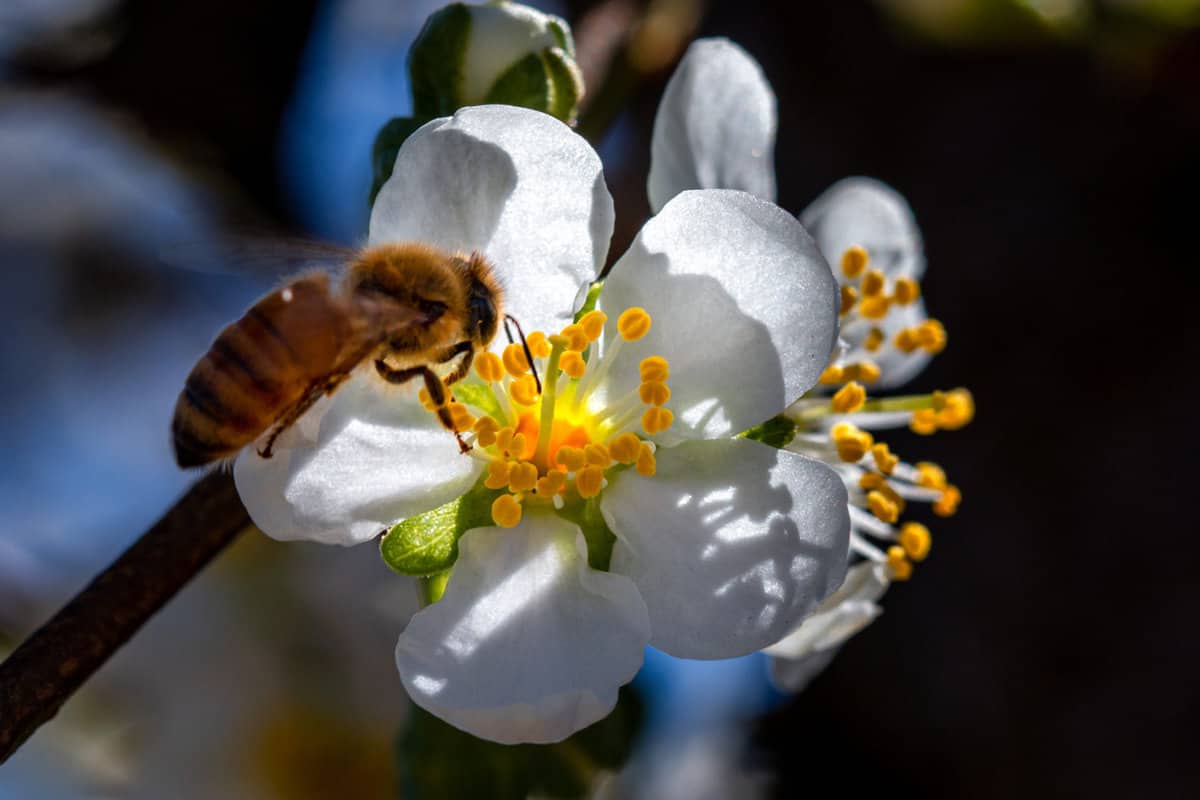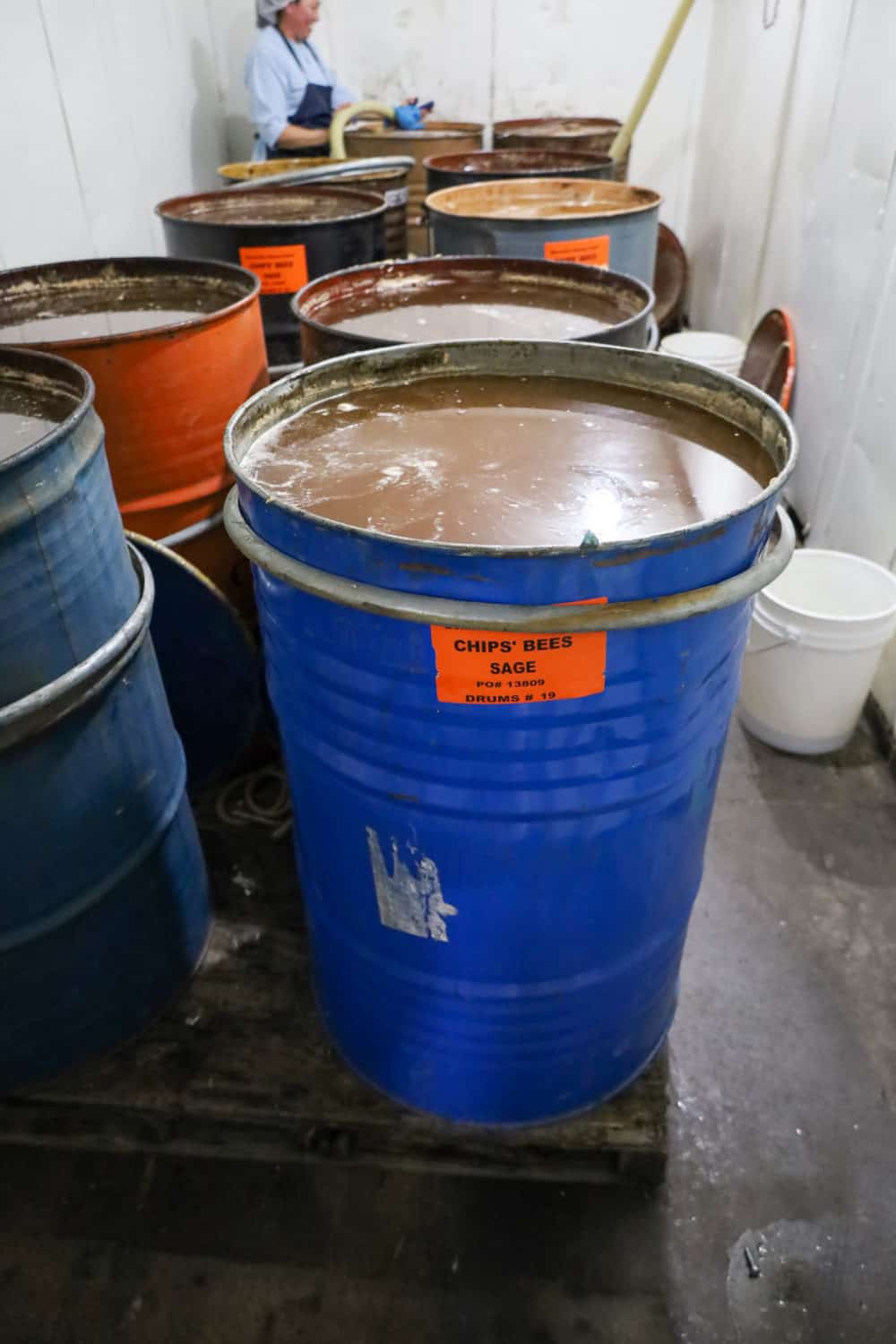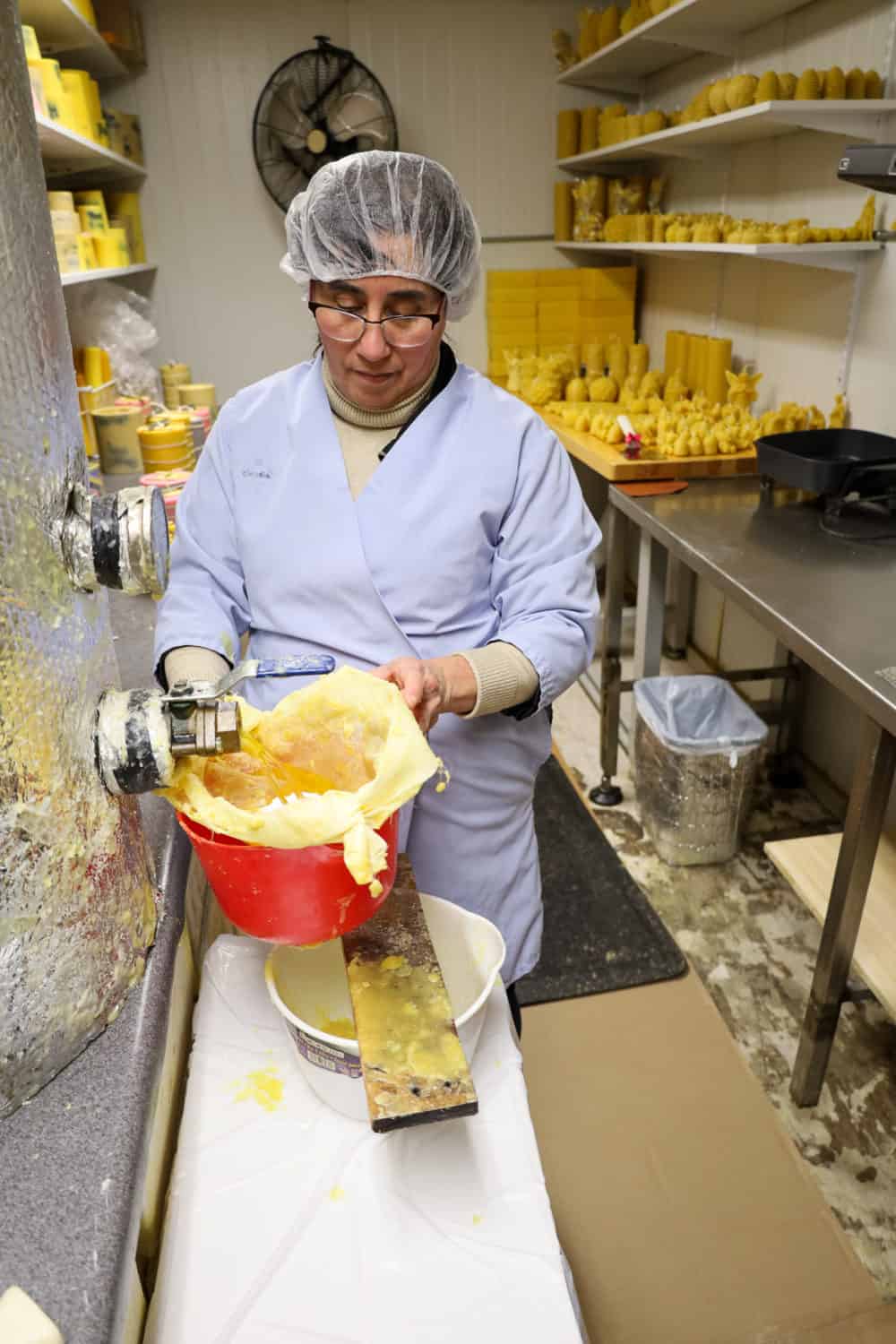A Visit to Bennett’s Honey Farm
Once a year, over half of all commercial beehives in the United States descend on California for the largest pollination event in the world. In each of these 1 million beehives live 30,000-60,000 worker bees who are tasked with pollinating the vast acreage of almond orchards in the Central Valley. We recently met with Al Fortune, general manager of Bennett’s Honey Farm and Chip’s Bees to learn more about what they do and why bees are so vital to California agriculture.
Bennett’s Honey Farm is located just north of Los Angeles the small town of Fillmore in the picturesque Heritage Valley in Ventura County. They run a small commercial honey-packaging facility and a shop where you can purchase (and sample!) local honey, skincare products made from their own beeswax, as well as candles and other gift items. Bennett’s Honey Farm is family owned, and they are proud to be an entirely solar powered operation. Because they produce an excess of power, they are nearly a zero carbon footprint operation.

Meet Al Fortune, General Manager
Al, who on first impression might seem a bit gruff, is actually a gentle, softspoken man with a wealth of knowledge when it comes to bees. He was an LA County firefighter for 37 years before he started working at the honey farm. His brother-in-law Chip Vannoy and Chip’s wife Taydee purchased the business from the Bennett family in 2011. They hired Al to help them navigate the fire requirements and permitting for their state and county facilities. Al enjoyed the work and has helped run the business ever since.
“We acquire local honeys and we pack it and sell it in the Topanga Quality label, which is our home label. We do a lot of private labeling as well. Our intention is to only pack and procure premium raw honey,” says Al. “We’re what we call a niche supplier – we supply the sage honeys, the orange blossom honey, the avocado honey, the buckwheat wildflower [honey]. Our intent is to support the local beekeeper,” he continues.
When we visited the honey farm, their hives had just returned from pollinating the almond blossoms. “Chip’s Bees has approximately 14,000-16,000 colonies. And right now the commercial beekeepers are just finishing up their almond pollination contracts. Remember, California produces the world’s almonds. Estimates are, an acre of almonds will produce 400-600 pounds of nuts. But if you take that same acre, once it’s had commercial pollination, you’re somewhere around 3200-3500 pounds of nuts. So it’s very important to have almond orchards receive commercial pollination,” explains Al.
Commercial beekeepers make sure to alternate monocultural food sources (such as almond, orange, or avocado blossoms) with polycultural food sources like wildflowers. This helps to keep their colonies healthy. According to Al, “It’s very important because there are so many specific nutrients in each plant that are important to the bees.”




How Bees Make Honey
At Bennett’s Honey Farm they utilize everything from the honey to the wax to make their products, and each type of honey has a unique flavor. “When we talk about the varietal of honey, when I mention orange blossom or sage honey or avocado honey, that’s the particular nectar from that blossom. The bees go and forage for that nectar and they gather that nectar and they carry it back to the colony in the honey sacks on their bodies,” says Al.
When the nectar combines with the enzymes in bees’ bodies it converts to sugar which is placed inside the cells in the honeycomb. The bees then fan the sugar to evaporate the moisture until it becomes a rich, condensed sugar syrup, AKA honey. “The worker bees fan it with their wings. They’ll evaporate the moisture. When that moisture [content] gets to 18% or less, then the bees will cap it,” Al explains.
When beekeepers harvest the honey, they place it into 55 gallon drums. It is what they call “sugared honey,” and is often thick with crystallization. When it’s delivered to Bennett’s, before it can be packaged it must be warmed, then pumped into large tanks where they use a proprietary gravity straining system to remove any impurities. Then it is bottled, labeled and sent to market or sold in their shop.
“Pure raw honey is crystallized. And that’s what you want. Honey is the only food that doesn’t spoil. They took honey out of the Egyptian pyramids that was completely sugared. It was solid as a rock, but they warmed it up to the appropriate temperature and it liquified and they were able to sample honey that was back from the Egyptian days,” Al marvels. “We get our honey from our beekeepers in drums. Typically a load is 66 drums, 650 pounds of honey per drum. We’ll warm it up until it’s no longer sugar and you can flow it, somewhere around 115, 120 degrees, which coincidentally is about the same temperature inside of a active bee colony,” he continues.
“We use gravity straining and we don’t filter our honey. Honey that’s been processed has been filtered and heated, usually in excess of 160 degrees. When honey’s been heated in excess of 160 degrees, it’ll no longer sugar because you’ve changed the chemical composition of it. So we’re very careful to maintain lower temperatures so we can keep the integrity of the honey. We want to remain pure, raw and unfiltered,” say Al.



Wax On
In addition to packaging honey, at Bennett’s they also harvest the beeswax. The wax that bees use to cap the honey cells is particularly prized for making everything from candles to beauty products. Al notes that their wax is sought after because it’s pesticide free. “We sell a lot of that to companies that use it for lotions and lip balms and things of that nature,” he says. At Bennett’s they melt the cap wax down to make their beeswax candles in house. “We use only just the pure cap wax. We don’t add anything to it like paraffin,” he adds. They also package and sell the center of the honeycomb which many people enjoy eating, especially in Europe. It’s also become quite the popular addition to charcuterie and cheese boards.
Al is passionate about his work and wants to educate everyone about the importance of bees. He especially loves to have shool children visit the honey farm on field trips. “One of every four things we touch during the day is a result of bee pollination. When we talk about [the kids’] lunch, I ask them about their hamburger and the the bread. Of course the bees pollinate the flour. But what about the lettuce and tomatoes? The bees pollinate that too. What about the hamburger? Well, bees don’t pollinate cows. But what do cows eat? Well, cows eat alfalfa, so that has to be a pollinated. And they learn about that,” he says. “My final question is always, what about that sweatshirt that you’re wearing? Well, that’s cotton and cotton is a big honey source for us,” he says with a smile.



Save the Bees
Al is ever mindful of bees’ vital role in agriculture and the many challenges that beekeepers face. Colony collapse disorder is one of the big ones. “It’s not cell phone towers and it’s not 5G. It usually it has to do with food issues and even some environmental concerns. Beekeepers are constantly dealing with everything from mites to intestinal problems with the bees. That’s just the nature of beekeeping,” he says.
While most people know that bees are good for the planet, there is still a lot of fear when folks see them swarming. “A week doesn’t go by where we don’t have three or four phone calls from people that deal with swarms and wanna know what to do with ’em,” says Al. ”When you see a swarm it’s here today and gone tomorrow. Those bees are looking for a place to rest, reside or are looking for food,” he explains. According to Al, swarms are usually nothing to worry about.
And if you’re looking to help the pollinators? Plant pollinator-friendly plants and flowers and don’t forget the water sources. “Bees like to have nice wet sand. When you see bees that are showing up in your fountains and whatnot, sometimes the bees get so hot that they run out of water and they come down looking for a water source.”
Al is excited because this is the first year in many years that they will be able to make sage honey due to the good rainy season. Sage honey is not only prized for its flavor, but also because it takes a lot longer to crystalize. This year, they also plan to offer sage honeycomb for sale. Bennett’s also makes several other single varietal honeys as well as wildflower honey, all of which are available to sample in their tasting room. They also have a live, observation beehive in the store that is mesmerizing to look at.
“Come on out and see us, see the retail sales, see the honey observation hive, taste all the honeys. We’re hoping to have the Honey Harvest Festival again. We’re hoping to have more regular tours too,” Al says.
You can find Topanga Quality honey in local specialty markets, some nationwide supermarkets, fruit stands, farmers markets and online. Or you can visit them out in Fillmore. The honey tasting room is conveniently located on Honey Lane.

Article by Alison Needham.


We have a swarm and need them out today as we have workers coming this afternoon. Could you use some more bees?
Hi Norma – we aren’t actually affiliated with Bennett’s Honey Farm, we just published an article about them. You should reach out to them directly regarding the swarm. Good luck!
Hi, genuinely curious if you all would allow for someone to sample a whole slab of the honeycomb straight from where y’all keep the bee’s? I know it’s a strange ask but I’m doing it for my Wife’s birthday.
Hi Job, we are not actually affiliated with Bennett’s Honey Farm we only featured them on our website. You will need to reach out to them directly to see if they can make that birthday wish come true.